Volume V, #5
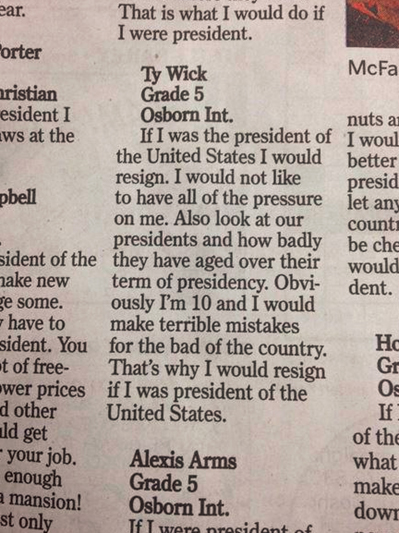
Young people often have a very different perspective. Consider that one of the most viewed, highest revenue producing channels on YouTube is DisneycollectorBR. DisneyCollectorBR posts videos of her hands (with colorful nail polish and bracelets) unboxing Disney toys and playing with them. All DisneyCollectorBR videos begin with the hands and a Brazilian-accented voice (the BR stands for Brazil) saying: “Hey guys, Disney Collector here. Today I’m going to show you…” In DisneyCollectorBR’s most popular video, she unboxes “egg surprises” from SpongeBob, Angry Birds and Jake and the Neverland Pirates. The video’s 100 million views can be explained by her amazing ability to crinkle the packaging. DisneyCollectorBR has been called by some “Christmas morning every minute,” and by others – less charitably – toy porn.
 The Great Unboxing
The Great Unboxing
***
While MOOCs may be “massive,” they are far outweighed by DisneyCollectorBR. And they appear less massive with each passing year. Nor are they sustainable, according to Babson’s annual survey of 2,800 university leaders:
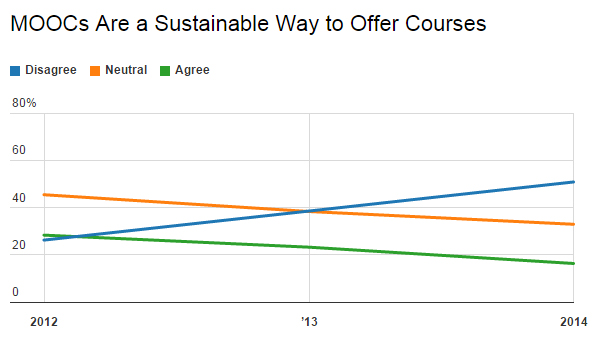
The reason for this is the absence of a viable business model, as we noted three years ago. MOOC pioneer Udacity figured this out and pivoted in 2013. Coursera pivoted last year and now, in addition to MOOCs with “verified certificates” (not for credit, but a certificate indicating… something), Coursera offers Specializations (a defined series of courses), and is licensing MOOCs for universities to incorporate into existing degree programs – an uphill battle in the “not invented here” world of American higher education.
But just because there isn’t a viable business model doesn’t mean MOOCs can’t help universities advance their missions. MIT OpenCourseware was launched in 2002 after other universities had launched proto-MOOCs such as Fathom (Columbia, LSE, Chicago, Michigan) and AllLearn (Yale, Stanford, Princeton, Oxford). MIT OpenCourseware published all MIT course materials online and made them available globally. Currently, over 2,000 courses are posted on the site, which has had over 125 million visitors, helping to ensure that MIT remains the most searched university online.
Rather than bemoaning their investments in MOOCs, universities should learn from OpenCourseware and ask this question: whom are we trying to reach? The answer for most of the institutions that have boarded the MOOC train is talented adolescents around the globe, whose mindshare universities are trying to win.
***
DisneyCollectorBR has impressive mindshare of adolescents (although perhaps not the most talented ones). And so do the superstars of Udemy, a marketplace of more than 22,000 online courses, in which over five million students have enrolled.
Consider the top-selling Udemy course “Double Your Confidence & Self Esteem,” taught by Jimmy Naraine:
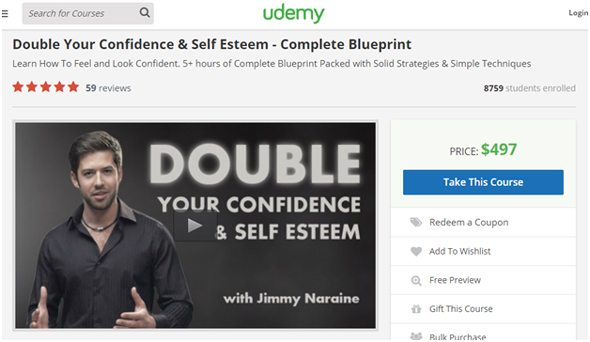
In addition to his 70s-chic wardrobe and grooming and his uncanny ability to quantify confidence & self esteem (how else could he know it’s a double?), Jimmy reports he is a “high end coach” who “helps his clients [take] that big step to a completely different lifestyle.” His education? The school of hard knocks, because Jimmy “believes that real education takes place outside university halls.”
Or consider another thought-provoking Udemy top-seller/academic pyramid scheme:
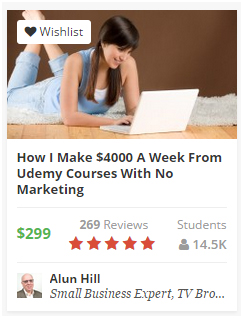
Universities don’t need to tenure Jimmy Naraine or resort to pyramid schemes in order to capture mindshare of tomorrow’s students. But they should draw an important lesson. In an effort to confer academic legitimacy on online learning and to set an example for other less digitally-oriented faculty, many universities selected distinguished, tenured (read: older) faculty for early MOOCs. Newsflash: while there are exceptions, if the purpose of MOOCs is to impress and engage adolescents, such faculty aren’t the best choice.
More junior faculty, with more relatable material, could probably do a lot of good for their institutions. So not Jimmy, but someone like 25-year-old Nick Walter, profiled in The Chronicle of Higher Education earlier this month. A recent BYU graduate, Nick dances to techno music in a promo video for his course on Swift (Apple’s new programming language), and is seeing as many as 200 enrollments daily for his $199 Udemy course. Young, dynamic faculty, grad students, and even undergraduates, could help make MOOCs a central component of the college selection and admissions process.
Penn has the right idea. One of its most popular MOOCs is “Applying to U.S. Universities” by Penn counseling specialist Erick Hyde, who looks like the guy you’d want your daughter to date after she breaks up with Jimmy Naraine.

Similarly, on edX, the MIT-Harvard MOOC platform, Rice (actually RiceX) offers a course on preparing for the AP Physics 2 exam. The faculty member does not have an endowed chair, nor is he tenured. Instead, the MOOC is led by the Executive Director of Rice’s Center for Digital Learning, co-teaching with an AP physics teacher at a local high school. So while it’s not the Nobel Prize winners that so excited the New York Times when it declared 2012 “the year of the MOOC,” it’s a fair bet this MOOC will successfully draw more than a few terrific students to Rice. And that’s a win.
***
Universities have been wrong about MOOCs in two respects: first, that there was a business model; and second, that it’s important to reach 40- 50- and 60-something professionals with advanced degrees living outside the U.S. In fact, unless these “students” are getting ready to pull out their checkbooks and donate, it’s unclear how they can possibly help universities advance their missions.
It is highly ironic that many universities’ first experience delivering courses entirely online has been, in television parlance, old school sit-coms with laugh tracks vs. an “over-the-top” channel like Funny or Die. Rather than tapping young, relatable faculty and students who wouldn’t be out of place on YouTube, universities have relied on the academic equivalents of Lucille Ball and Jackie Gleason. While no institution needs to hurry up to produce MOOCs with DisneyCollectorBR or even Justin Bieber, universities should view MOOCs as an important channel for reaching prospective students around the world, and target content accordingly.
University Ventures (UV) is the premier investment firm focused exclusively on the global higher education sector. UV pursues a differentiated strategy of ‘innovation from within’. By partnering with top-tier universities and colleges, and then strategically directing private capital to develop programs of exceptional quality that address major economic and social needs, UV is setting new standards for student outcomes and advancing the development of the next generation of colleges and universities on a global scale.

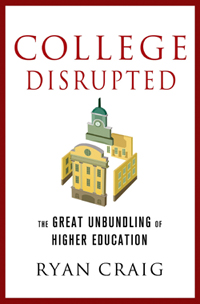 From College Disrupted: The Great Unbundling of Higher Education
Palgrave Macmillan (publication date March 10, 2015)
From College Disrupted: The Great Unbundling of Higher Education
Palgrave Macmillan (publication date March 10, 2015)
“Years before he conceived the iPod, iPhone and iPad, Steve Jobs was designing videogames for Atari. Jobs hated complicated manuals, saying products needed to be so simple that a stoned freshman could figure them out. The only instructions for the Star Trek game he built for Atari were: ‘1. Insert quarter. 2. Avoid Klingons.’… If there’s one product or service that should be designed so that a stoned freshman can figure it out, it’s higher education. Sadly, the traditional seat-time-based higher education model may be the last simple, most complex product or service purportedly designed for mass consumption.”
Pre-order the book at Amazon Follow Ryan Craig on Twitter @ryancraiguv
Comments